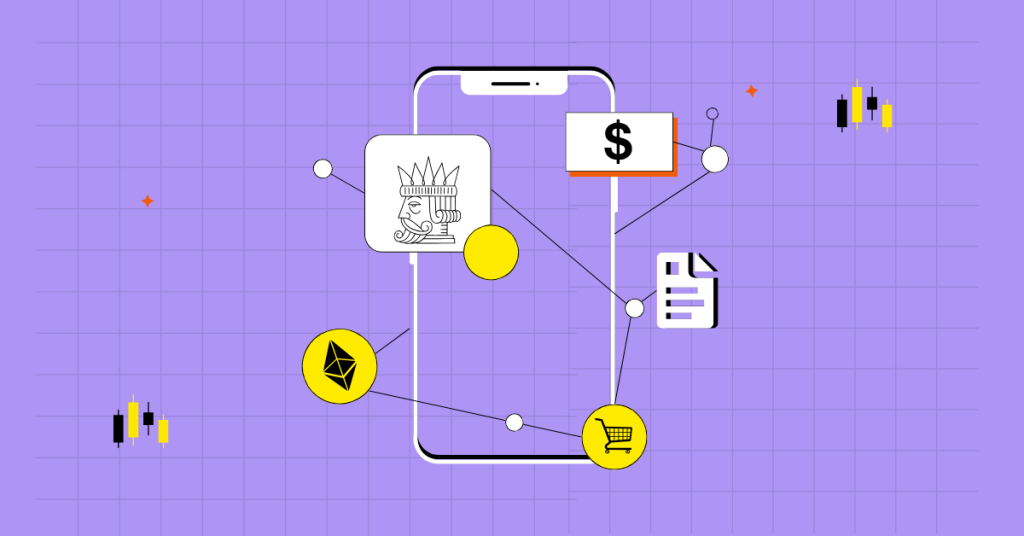ARTICLE AD BOX

The post Ape Terminal’s Hatu Sheikh believes DePINs’ Will Usher Web3’s Integration into the Physical World appeared first on Coinpedia Fintech News
Throughout the blockchain and Web3 sector’s relatively brief history, bold ideas and innovative use cases have persistently emerged. However, one rapidly evolving narrative that stands out as potentially the most transformative and impactful for ushering real-world utility into this novel technology stack are Decentralized Physical Infrastructure Networks, or DePINs.
At their core, DePINs are brilliantly simple yet powerful tools leveraging a wide array of crypto-economic incentives alongside blockchain’s trustless coordination capabilities to crowdsource the build-out and operation of physical networks and infrastructure.
Rather than centralized corporations making massive capital expenditure investments, DePINs align a global pool of resource providers and reward them with tokens for contributing devices, computing power, connectivity, and more to bootstrap these networks from the ground up collaboratively.
According to Messari’s blockchain data analysis, DePINs’ current market value is around $2.2 trillion, with a projected growth of $3.5 trillion in the next four years. The possibilities DePINs unlock across sectors like the Internet of Things (IoT)and wireless mesh networks as well ass others like edge computing, mobility solutions, and energy distribution that have barely been tapped into.
Leading projects like Helium, Filecoin, Akash, and Render Network are laying the crucial groundwork needed, allowing this market to flourish and reach its full potential.
Major entities participating in the burgeoning DePIN ecosystem (source: Coin98 Analytics)
DePINs quite literally represent Web3’s physical manifestation – transitioning blockchain from purely digital ecosystems to enabling trustless coordination of tangible, real-world resources and economic activity.
This pivotal development bridges the perceived gap between the online virtual worlds many still associate with crypto and the creation of quantifiable value in the physical realm. DePINs serve as the stepping stone for blockchain’s evolution from niche technical experiments to ubiquitous foundational infrastructure integrated into every critical industry and facet of society.
Perhaps DePIN’s most promising attribute is its unique potential to supercharge artificial intelligence development and mainstream deployment. The blockchain’s ability to incentivize global coordination and pooling of distributed infrastructure enables tapping into a vast reserve of computing power and resources.
As AI models grow increasingly resource-intensive, DePIN provides a seamless way to supply these immense computational needs efficiently and securely without sacrificing data privacy or falling into overreliance on centralized providers.
Peaq Network CEO Leonard Dorlöchter aptly describes DePIN and AI as a “match made in heaven,” noting how DePINs can create “an ownership and value distribution framework” for AI-powered machines operating as autonomous economic agents in the real world.
In fact, Peaq has already used the technology to tokenize a fleet of Teslas as well as facilitate Bosch’s collaboration with the European Union on a decentralized IoT project, signaling the growing use cases for DePINs.
We’re just beginning to glimpse the possibilities, but the implications of cohesively integrating these two transformative technologies could fundamentally redefine how human societies develop, deploy, and interact with AI systems across verticals like healthcare, transportation, manufacturing, scientific research, and beyond.
Of course, for the DePIN sector to thrive in the long term, several key challenges must still be navigated successfully. Securing sustainable liquidity and funding for incentive models, instilling robust security and data authentication frameworks, and achieving mainstream regulatory clarity and acceptance are just a few of the hurdles.
However, the generational opportunity is immense for those projects and teams willing to put in the intensive work building out comprehensive, battle-tested solutions.
Coming off the generative AI boom that catalyzed mainstream blockchain awareness and enthusiasm in 2023, all signs point to 2024 shaping up as a pivotal year for DePIN visibility, maturation, and adoption.
Throughout this still-nascent Web3 industry’s rapid evolution thus far, DePINs may very well emerge as the elusive “killer app” that finally propels cryptocurrencies and decentralized technologies into ubiquity across every major sphere of human civilization.
This sector is finally bridging the lingering divide between blockchain’s perceived virtual constructs and the economic infrastructure underpinning the physical world we inhabit. DePINs represent the crypto movement’s prime conduit for transforming how human societies build, coordinate, and interact with the tangible resources and environments around us. Ambitious leaders recognizing this gestating narrative now have a profound opportunity to spearhead the architecture of the decentralized future.
.png)
 10 months ago
4
10 months ago
4








 English (US)
English (US)